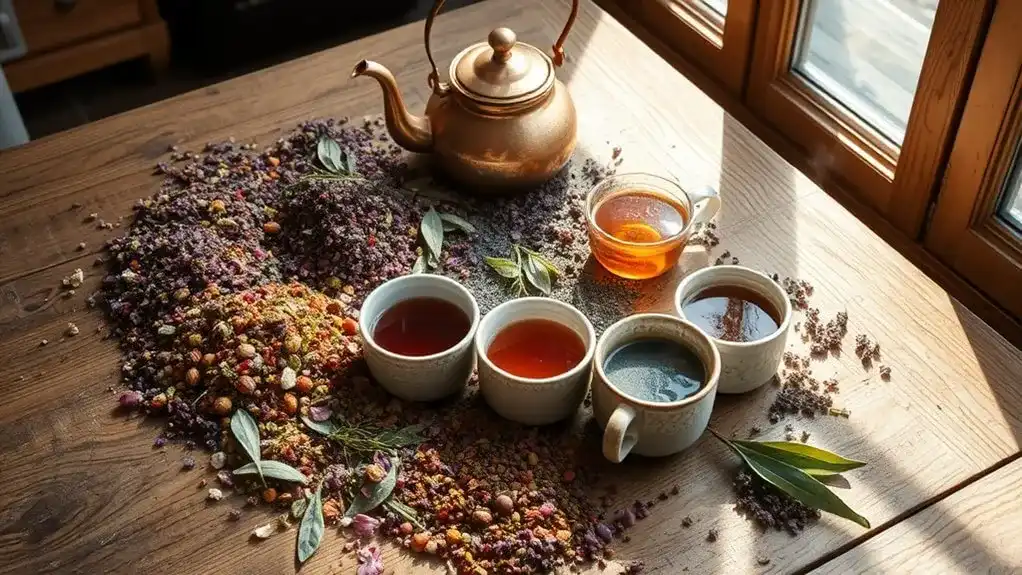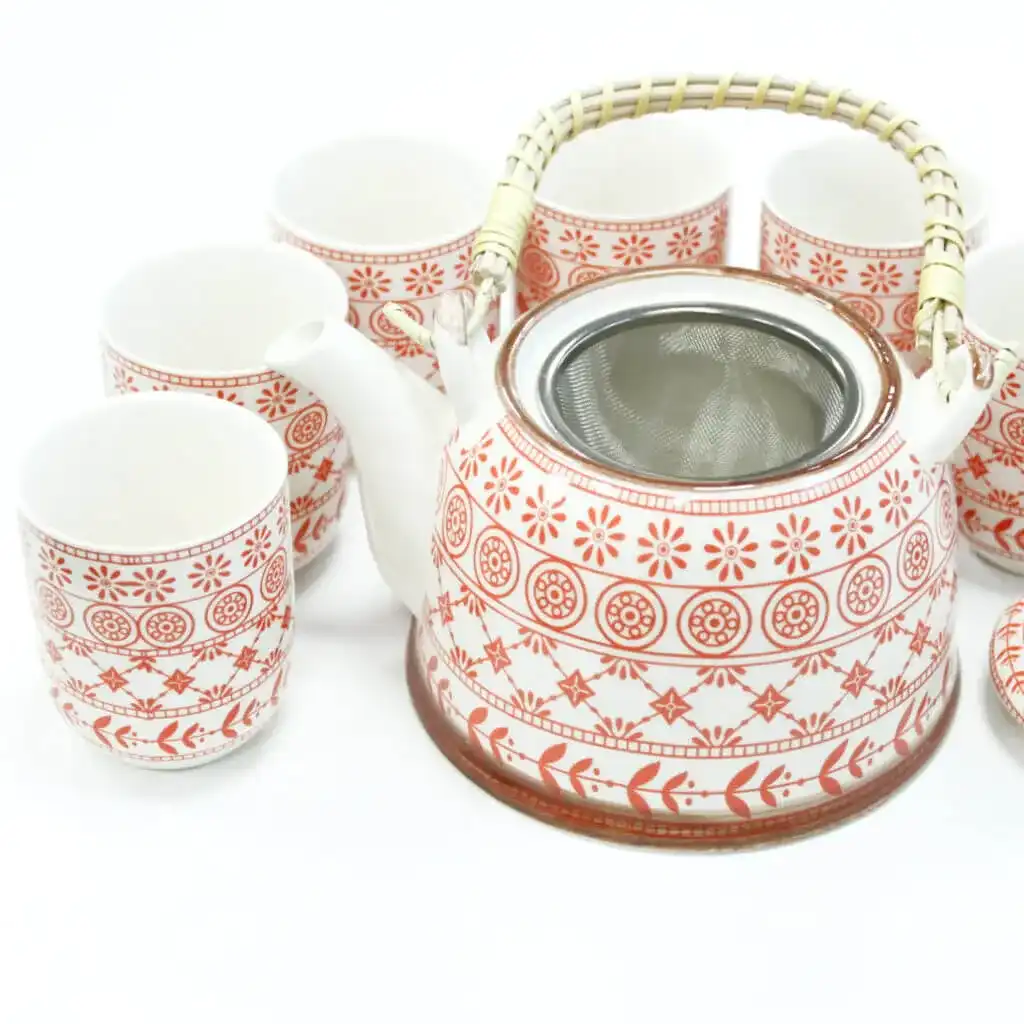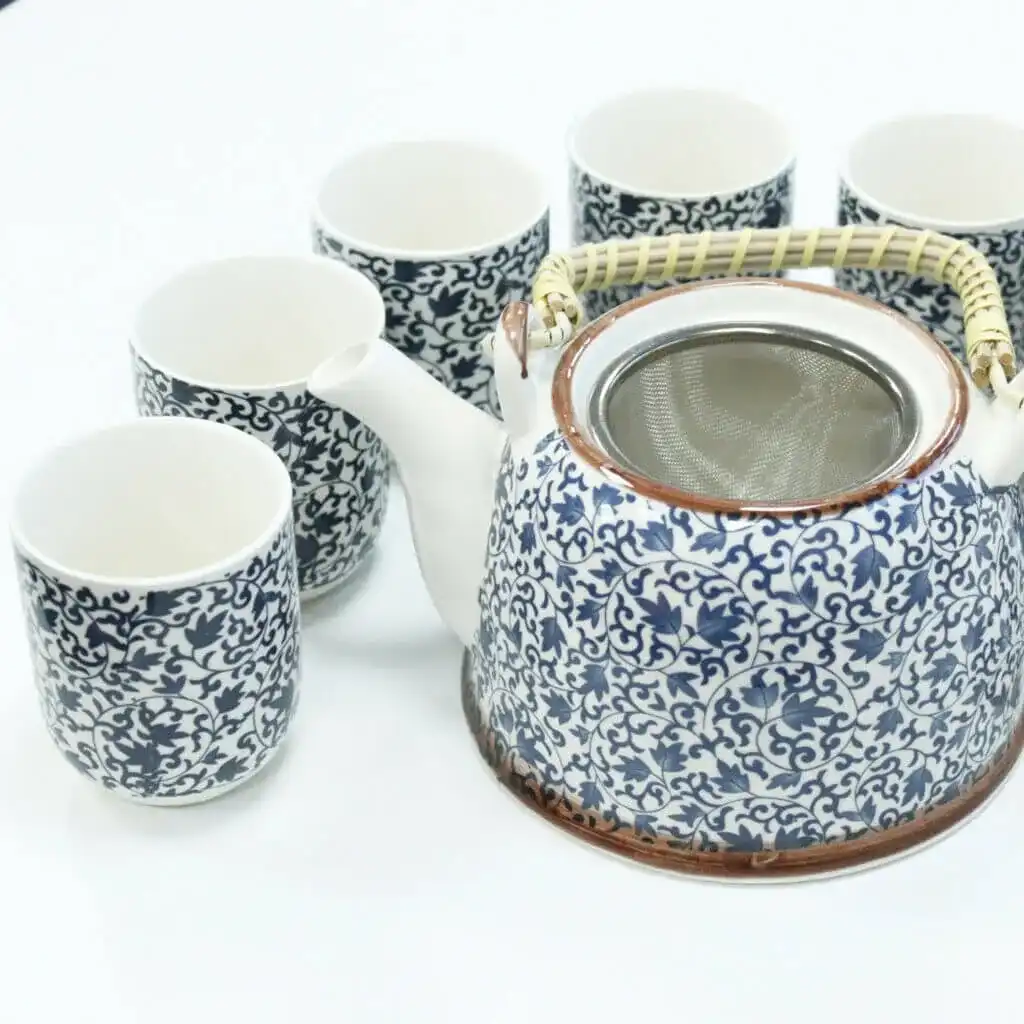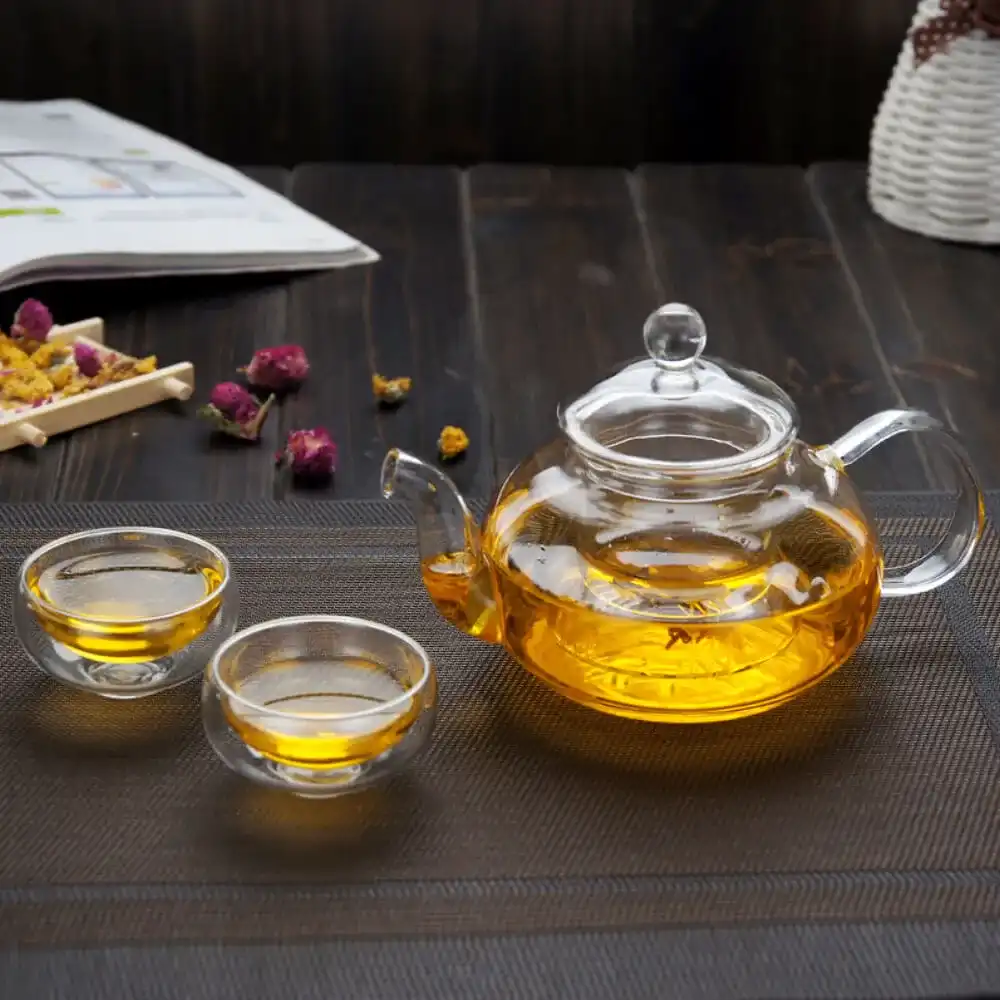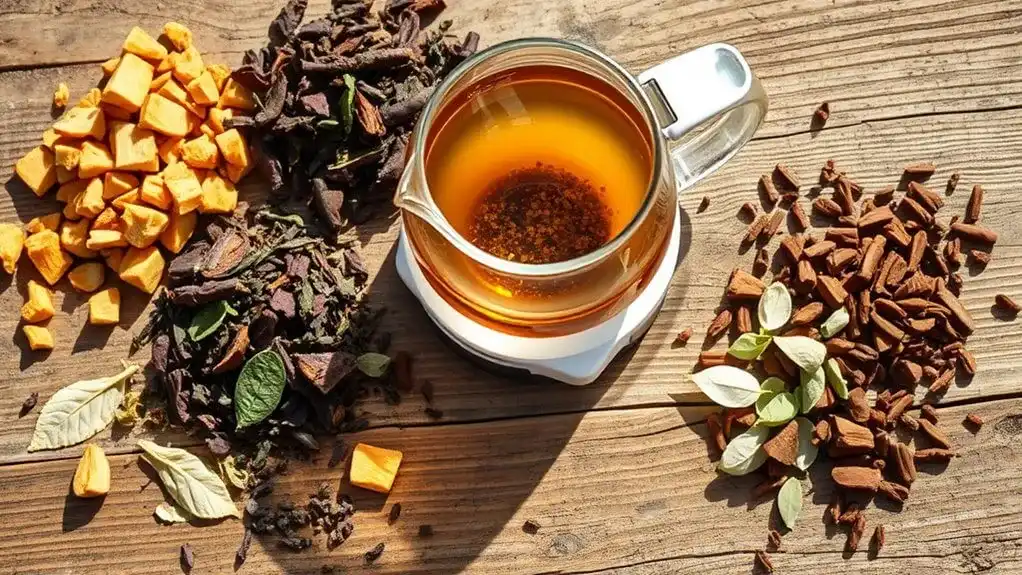Traditional European herbal tea culture extends far beyond chamomile, incorporating diverse regional ingredients and centuries-old wisdom. From Mediterranean blends featuring hibiscus and orange peels to Nordic combinations with bilberry and sea buckthorn, each region boasts unique flavor profiles and therapeutic benefits. Herbalists create synergistic blends using elderflowers, valerian, gentian, and aniseed, while following time-honored harvesting and brewing techniques. This rich tapestry of herbal tea traditions holds countless secrets waiting to be discovered.
Key Points
- Mediterranean blends combine hibiscus, orange peels, and star anise for complex flavors, while Nordic blends feature lighter notes with bilberry.
- Traditional European tea blends incorporate elderflowers, hibiscus, valerian, gentian, aniseed, and ginger for enhanced medicinal benefits.
- Fresh herbs should be harvested mid-morning and dried to 5-6% moisture content for optimal flavor preservation.
- Most herbal teas require 90-100°C water temperature and 5-7 minutes steeping time for proper flavor extraction.
- Folk medicine traditions influence Southern European blends, focusing on therapeutic properties alongside taste profiles.
The Rich Heritage of European Herbal Tea Making
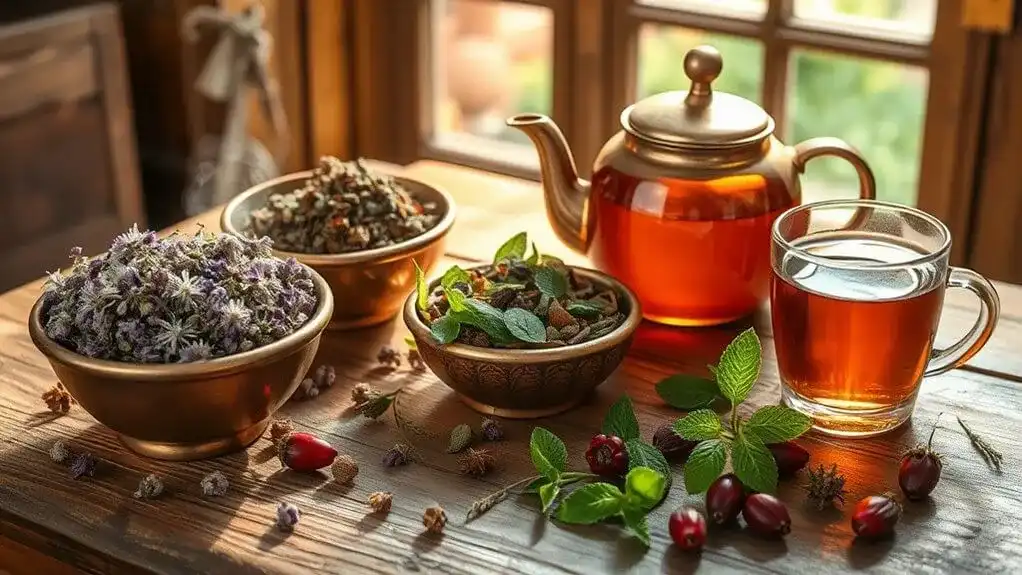
While tea is often associated with Asian cultures, Europe's relationship with this beloved beverage spans over four centuries, beginning with Portuguese missionaries' first documented encounters in 1569. The historical significance of tea in Europe transformed from an exclusive luxury into a cornerstone of daily life, particularly after Portuguese princess Catherine of Braganza introduced it to the English royal court in the 1660s.
The Dutch East India Company's dominance in trade helped establish tea as more than just a drink – it became the center of cultural rituals across the continent. From England's afternoon tea traditions to the incorporation of local herbs like chamomile, European tea culture evolved uniquely in each region. Ireland emerged as a notable tea-drinking nation, becoming the second highest consumer per capita globally. The English particularly enhanced tea's popularity by adding sugar to make it more palatable. This rich heritage reflects centuries of trade, social customs, and the blending of Asian traditions with European herbalism. Tea's journey from a medicinal elixir to a common beverage marked a significant shift in European consumption patterns during the late sixth century.
Essential Ingredients in Traditional European Tea Blends
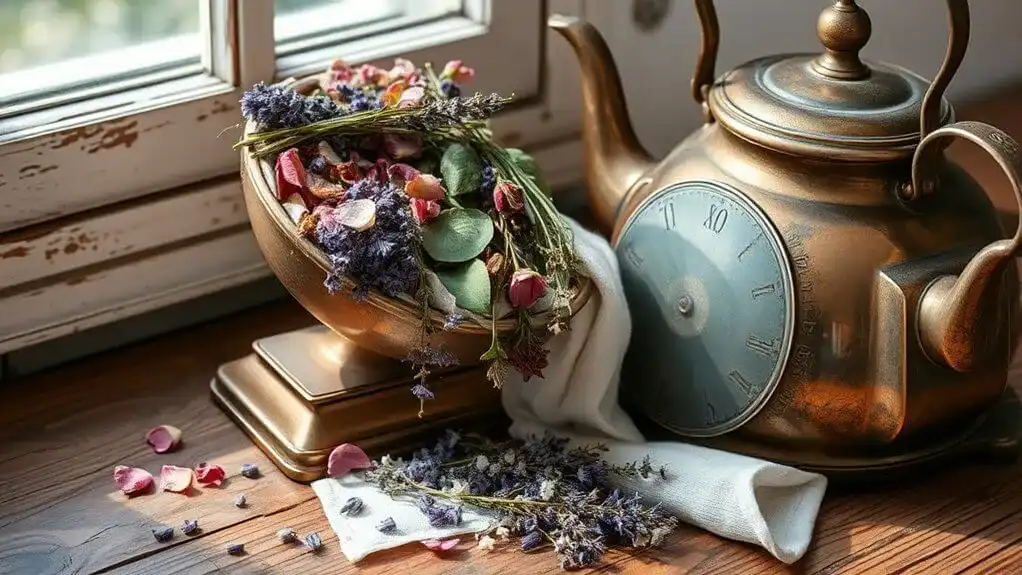
Throughout centuries of tea-making tradition, European herbalists have carefully selected specific ingredients to create distinctive tea blends that offer both flavor and therapeutic benefits. From soothing chamomile uses for relaxation to fennel benefits for digestive health, these ingredients form the backbone of traditional European tea culture. Folk medicine traditions remain especially strong in Southern European countries today. Traditional foraging practices in Romania include gathering and drying fresh elderflowers each spring for their sweet aromatic qualities.
The carefully curated selection includes fragrant flowers like elderflowers and hibiscus, healing roots such as valerian and gentian, and aromatic spices like aniseed and ginger. Each ingredient serves a specific purpose: rose hips provide vitamin C, linden leaves offer calming effects, and liquorice root adds natural sweetness. Herbalists often combine these elements to create synergistic blends, such as pairing lemongrass with verbena for enhanced citrus notes or mixing chamomile with valerian root for deeper relaxation benefits. These blends are best enjoyed when stored in dark containers to maintain their distinctive flavors and therapeutic properties.
Regional Variations: From Mediterranean to Nordic Blends
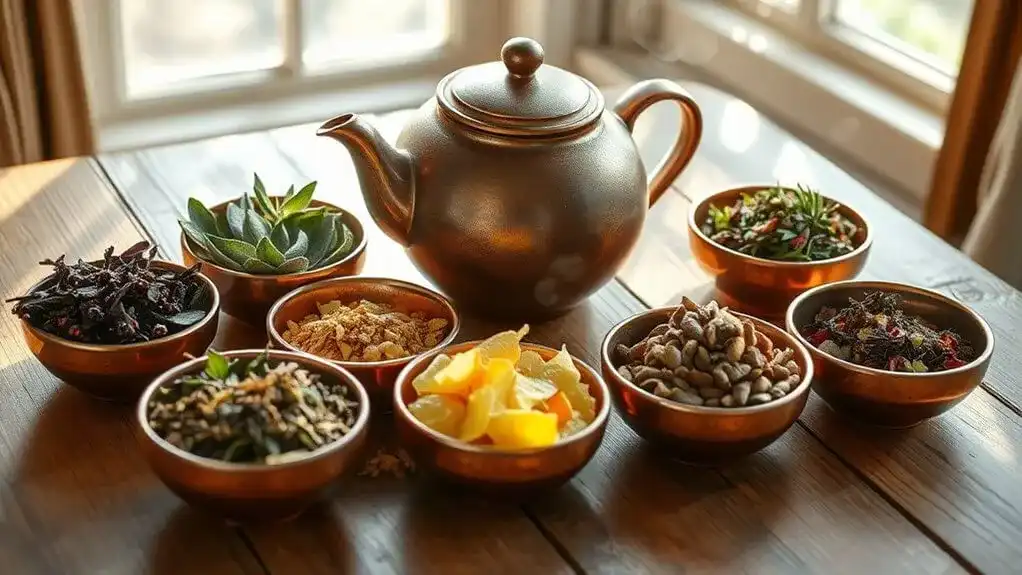
European herbal tea traditions showcase distinct regional characteristics that reflect local ingredients and cultural preferences, particularly in the Mediterranean and Nordic regions. Mediterranean flavors tend to be more complex and diverse, featuring ingredients like hibiscus, orange peels, and star anise, creating bold, multi-layered taste profiles. A perfect example is their use of liquorice root and peppermint to achieve a refreshing and slightly sweet taste. One notable Nordic brand is Viking Organic, which creates a soft full-bodied cup using locally sourced herbs, flowers, and fruits. The Mediterranean Blue blend exemplifies this complexity with its unique combination of jasmine, nettle, and butterfly-blue pea flower. The blend's natural blue-green hue makes it especially appealing when served as an iced beverage.
In contrast, Nordic traditions emphasize lighter, sweeter notes using indigenous ingredients like bilberry, sea buckthorn, and birch. These Nordic blends often carry organic certification and focus on detoxifying properties, as seen in the Scandinavian DETOX tea. While Mediterranean blends typically require shorter steeping times, Nordic teas need longer brewing periods to fully extract their subtle flavors and beneficial compounds.
Therapeutic Properties and Wellness Benefits
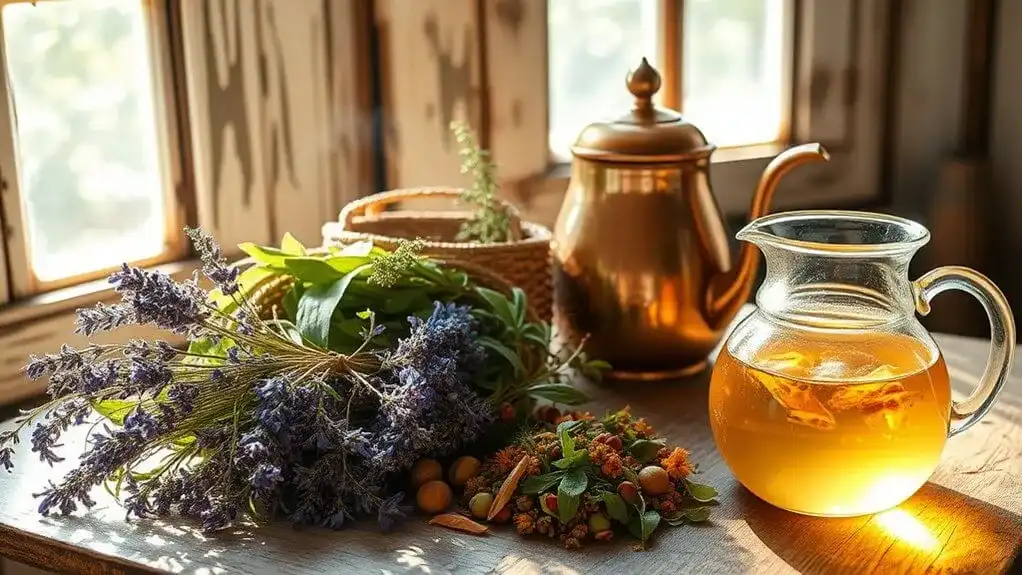
Traditional herbal tea blends possess a remarkable array of therapeutic properties that extend far beyond their comforting warmth. These time-tested herbal remedies offer diverse health benefits, from boosting immunity to promoting restful sleep. European traditions have long embraced these natural solutions, incorporating herbs like chamomile, peppermint, and lavender for their healing properties. Modern research continues to validate these traditional practices, confirming the potent antioxidant and anti-inflammatory effects of many herbal teas. Recent studies show that chamomile's dual warming effects can adapt to individual needs while supporting digestive health. The popularity of these wellness beverages continues to grow as consumers seek caffeine-free alternatives for their daily rituals. For those seeking evening relaxation, floral combinations like chamomile and lavender create the perfect blend for tranquility.
- Ginger and turmeric teas fight inflammation and support immune function
- Peppermint and fennel teas aid digestion and soothe stomach discomfort
- Chamomile and lavender teas promote relaxation and better sleep
- Rooibos and hibiscus teas deliver powerful antioxidant protection
- Lemongrass and echinacea teas provide antimicrobial and immune-boosting effects
Harvesting and Drying Methods for Perfect Tea Blends

Creating perfect herbal tea blends begins with mastering the essential arts of harvesting and drying. The best harvesting techniques focus on timing and precision, with herbs collected in mid-morning after the dew has dried but before the day's heat sets in. Healthy stems are cut above leaf junctions using clean scissors or clippers, promoting future growth while ensuring minimal plant damage. Never harvest more than one-third of the plant during growing season. Glass storage containers offer excellent protection for dried herbs during long-term storage.
Proper drying methods are equally vital for preserving flavor and therapeutic properties. While air drying remains the most traditional approach, dehydrators offer controlled environments for consistent results. The process requires protection from direct sunlight and careful monitoring of moisture levels. Tea leaves, particularly, demand specialized handling with hand plucking of young, tender shoots during spring flushes, followed by specific processing steps like withering and oxidation to develop their distinct characteristics. The drying phase is critical for proper storage and shelf life, with tea leaves requiring a moisture level of 5-6% for optimal preservation.
Brewing Techniques for Optimal Flavor and Benefits

When brewing the perfect cup of herbal tea, understanding precise temperatures and steeping times becomes essential for extracting ideal flavors and therapeutic benefits. Most herbal teas require water temperatures between 90-100°C and steeping times of 5-7 minutes. Traditional teapot rinsing methods involve warming the vessel with hot water before adding tea leaves for optimal brewing results. Small bubbles in your kettle indicate the water has reached the ideal temperature range of 160-170°F for more delicate herbal blends. Proper steeping techniques involve using fresh, filtered water and maintaining consistent tea-to-water ratios. Avoiding boiling water helps prevent unwanted bitterness in your tea. For flavor enhancement, adding natural ingredients like honey, lemon, or fresh mint can create unique taste profiles while complementing the tea's inherent properties.
- Use 1 tablespoon of dried flowers per 8 ounces of water for chamomile tea
- Pre-rinse tea leaves to remove impurities and dust
- Consider using a French press or glass teapot for best infusion
- Add cinnamon to chamomile tea for extra warmth
- Combine fresh fruits with herbs to create distinctive flavor combinations
Conclusion
Like delicate threads woven into a tapestry, Europe's herbal tea traditions connect generations through shared knowledge and healing wisdom. Today's tea enthusiasts aren't just steeping leaves; they're drinking from centuries of folklore and botanical expertise. Whether it's a sun-kissed Mediterranean blend or a robust Nordic infusion, these time-tested combinations continue to offer both comfort and cure, proving that nature's medicine chest remains as relevant as ever.
